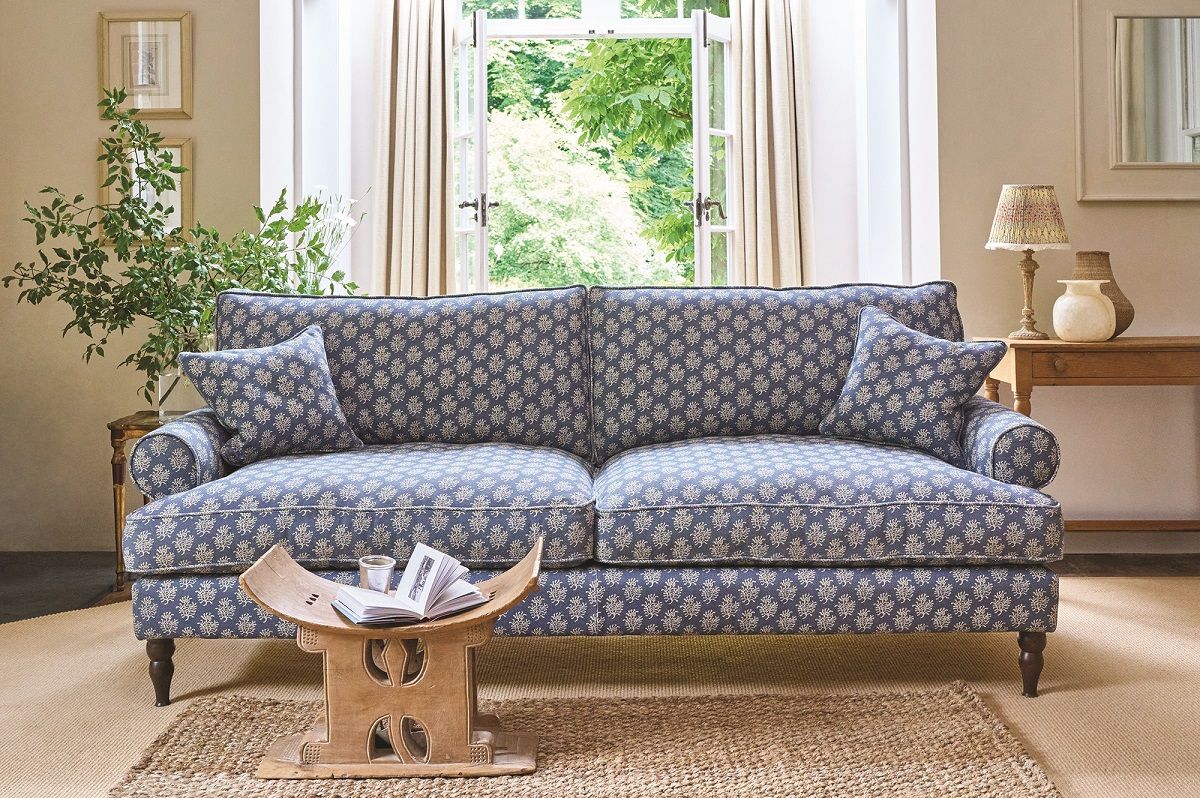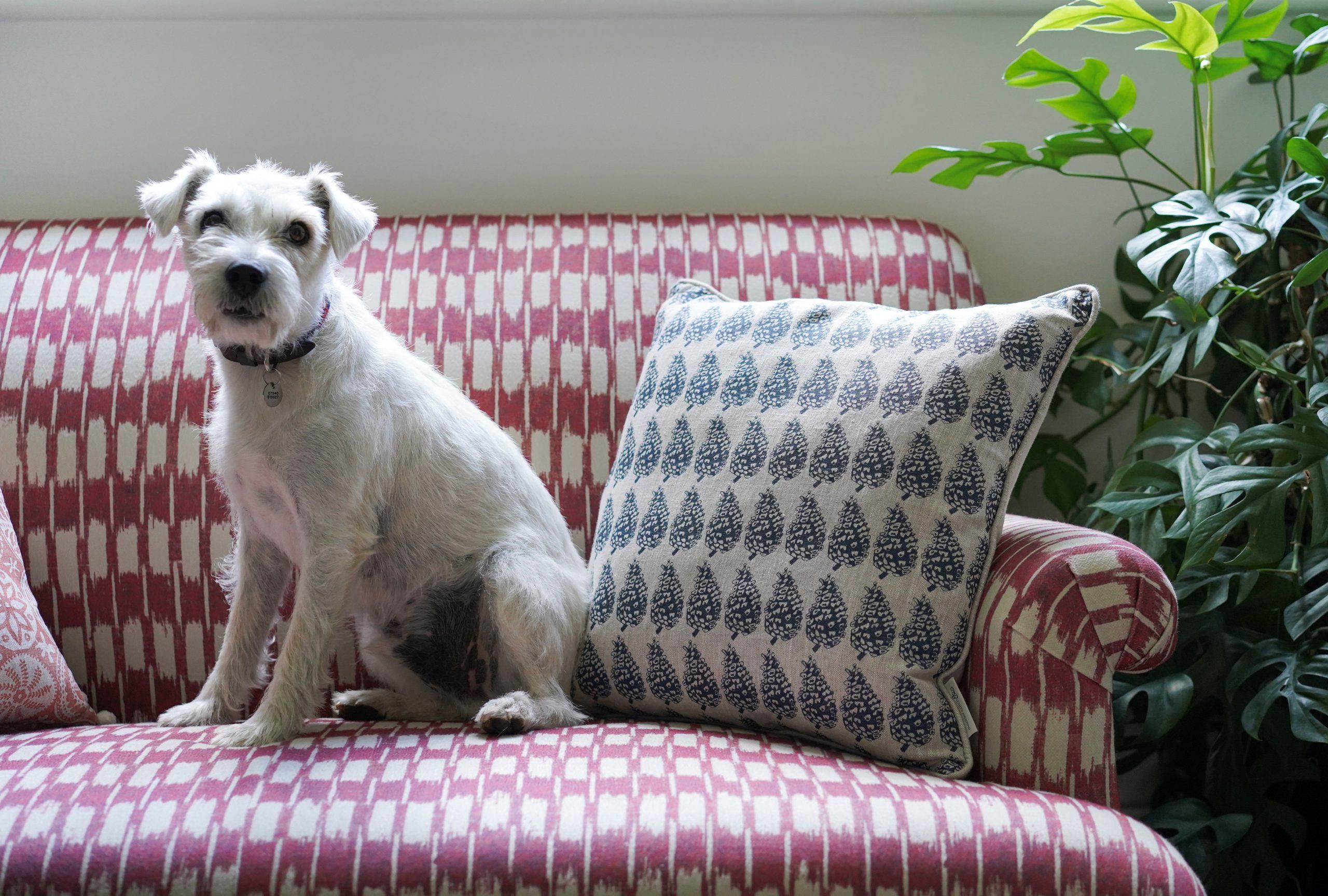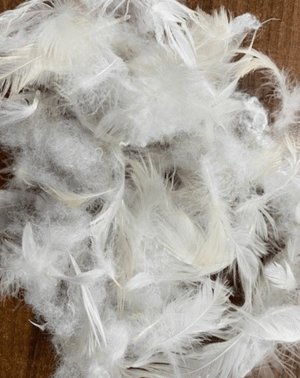Our feather, fibre and foam cushions – referred to as ‘3F’ cushions – combine the best qualities of all three filling types to create sofas that are both supremely comfortable and reliably supportive.
While 3F cushion interiors are, on the whole, a low maintenance filling, the proper care can help to maintain their unique blend of comfort and support. In this guide, we will cover the best practices to keep your feather, fibre and foam cushions looking and feeling exceptional.
Why choose 3F cushion interiors?
3F cushion interiors feature a supportive foam core for firmness and durability, wrapped in Quallofil Blue fibre and finished with feather-filled duvet channels that add and maintain loft. This combination offers a perfect balance of softness and support, with long-lasting shape and comfort.
Here are some of the reasons our customers might choose 3F-filled cushions for their handcrafted sofa or armchair:
- The foam core provides a firmer foundation, maintaining the cushion’s shape and offering support.
- Duck feathers add a softness to cushions with more give than fibre-only or foam-only cushions.
- The feather layer is arranged in channels around the foam core and fibre layer, helping to maintain loft and distribute comfort evenly.
- 3F offers excellent bounce-back, helping cushions retain their shape more easily than feather-only options.
Regular maintenance for 3F cushion interiors
Cushions filled with feather, fibre and foam are generally a low-maintenance sofa filling, keeping their neat shape and loft without too much effort. Nevertheless, to really maximise the comfort and look of your sofa, some regular maintenance truly pays off.
Plumping and re-dressing your cushions
3F cushions will naturally bounce back after being sat on and the individual chambers prevent the feathers from moving around too much. However, some plumping and redressing after use will ensure they look and feel as welcoming as possible.
To plump your cushions effectively, follow the below steps:
- Unzip the cushion cover halfway.
- Bash and fluff each cushion from every side to introduce air and plump up the duck feather and fibre mix.
- If possible (and safe), you can also drop your cushions onto the floor to redistribute the feathers and break up any clumps.
- After taking these steps, zip your cushions back up and return them to their place. You should see a marked difference in the plumpness of your sofa.
Rotating
Given the bounce-back nature of 3F, you shouldn’t need to rotate your cushions on a daily basis. However, to reduce excessive wear in certain spots on your sofa cushions – such as if you tend to sit in the same spot – rotating them every now and then can ensure a more even wear.
You can do this by taking the sofa cushion out of its cover and returning it with the opposite side facing upwards, or simply turning the cushion over if the cover is reversible.

Further care tips for 3F sofa cushions
If you are regularly giving your 3F sofa cushions a good plump to redistribute and even out the filling, you are well on your way to a lasting, comfortable sofa. These cushions need very little other care, but do keep the following in mind:
- Airing out your cushions: As your 3F cushions are partly filled with duck feathers, it can be beneficial to air them out every now and then – when the weather allows – to freshen them up and dispel any odours that may have built up. You can do this by removing the cushion from its cover and placing it outside on a clean, flat and dry surface for a few hours.
- Avoid overusing one spot: If you would rather not rotate your sofa cushions, but would like to avoid dips or sagging, try to vary where you sit for a more even wear.
- Protecting the foam core: Avoid placing anything heavy on your sofa cushions for long periods of time to avoid compressing the foam core and reducing its resilience.
Can you wash fibre, feather and foam sofa cushions?
In all cases, we would not recommend washing your 3F sofa cushions. This is owing to the duck feathers’ natural moisture-wicking oils, which will gradually be broken down by regular washing, until the feathers become dry and brittle, causing them to break.
What’s more, ensuring your 3F sofa cushions are completely dry can be a challenge. If any moisture remains, this can cause mildew and mould to grow in your cushions.
Accidents do happen
Our sofas are designed to be a part of your home’s many moments. Sometimes, this can involve mishaps involving little ones, four-legged friends or even our own oversights.
If you do experience a spillage or stain, we would first recommend you try to blot and soak it up with a soft, clean cloth before it soaks into your sofa cushions. In circumstances where you feel a deeper clean may be necessary to protect your cushion interiors, we would always suggest contacting a cleaning specialist rather than attempting to wash them yourself.

Ensure lasting comfort from your 3F sofa cushions
Proper care of your feather, fibre and foam cushions ensures they remain as comfortable and supportive as the day you first sit on them. By regularly plumping, rotating and airing out your cushions, you can maintain their exceptional comfort and inviting appearance for many years.
Our seasoned design consultants are experts in the care and maintenance of not just your cushions, but your entire sofa. Stationed across the UK in our nationwide showrooms, they are on hand to help as you choose your sofa cushion interiors, or for any aftercare questions. We encourage you to visit your nearest showroom to find out more or book a one-to-one design consultation at a time that suits you.


